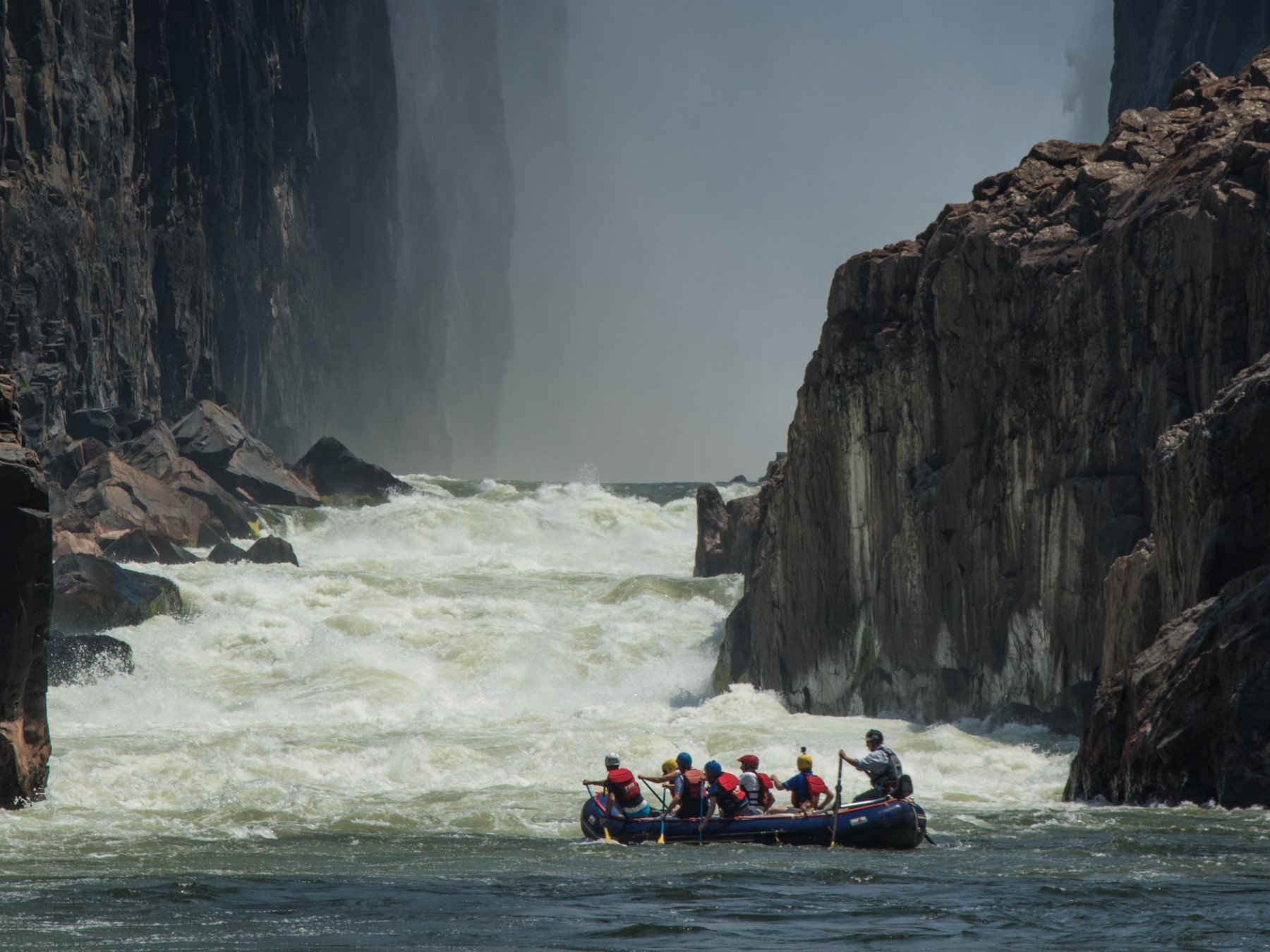Crucial Skills for Water Rafting
Grasping the art of water rafting calls for a mix of exact abilities and expertise to browse the unpredictable currents of rivers, making it a thrilling yet possibly dangerous task. As enthusiasts prepare to start their next adventure, it is critical to equip oneself with important competencies that go beyond just paddling. From comprehending the intricacies of river dynamics to swiftwater rescue techniques and seamless group communication, the journey down the river requires a mix of experience and adaptability. With safety protocols functioning as a keystone, participants are faced with a multifaceted difficulty that necessitates a meticulous method and steadfast emphasis.
Paddling Strategies
Grasping reliable paddling strategies is vital for browsing water rafts securely and effectively. One fundamental technique is the forward stroke, where paddlers dip the blade fully into the water and draw it back alongside the raft to produce propulsion.
Other than the forward stroke, the draw stroke is necessary for making quick changes or drawing the plethora better to a things. By positioning the paddle blade perpendicular to the water's surface area and pulling the water in the direction of the raft, paddlers can efficiently alter the vessel's direction. Moreover, the backstroke acts as an important tool for supporting or reducing down the raft when needed.
River Checking Out
Efficient paddling techniques, such as the forward stroke and draw stroke, play an essential function in navigating and translating river currents, an ability understood as river reading. River reading entails the ability to assess the rate, depth, and direction of the water circulation to make educated decisions while navigating rapids. By understanding how the water relocates around obstacles and through different channels, rafters can choose the very best route to securely pass through the river.
Eddies, for example, are locations where the water streams in a circular movement, frequently providing opportunities for remainder or strategic maneuvers. Hydraulics, frequently known as "holes," are areas where water recirculates back upstream, presenting possible risks to rafts.
Understanding the skill of river analysis is important for risk-free and satisfying rafting experiences, allowing paddlers to navigate tough waters with confidence and precision.

Swiftwater Rescue
Recognizing swiftwater rescue methods is critical for water rafting enthusiasts to react properly in emergency situation situations on fast-flowing rivers. Swiftwater rescue entails a set of specialized skills and expertise focused on securely extracting people from swift-moving water. One essential aspect of swiftwater rescue is recognizing the threats present in fast-flowing rivers, such as filters, undercut rocks, and strong currents, to plan and execute successful rescue procedures.
Appropriate equipment is necessary for swiftwater rescue, consisting of throw bags, rescue ropes, headgears, and individual flotation protection tools. Rafting fanatics should be proficient at using this equipment in high-stress situations to make certain the safety and security of themselves and others. In addition, swiftwater rescue methods commonly include teamwork and control amongst rafters to perform complicated rescue maneuvers effectively.
Training in swiftwater rescue is extremely suggested for individuals participating in water rafting tasks, as it outfits them with the essential skills to deal with emergency situations promptly and effectively. White Water Rafting Colorado. By understanding and exercising swiftwater rescue methods, water rafting lovers can boost their security which of their fellow rafters on challenging river explorations
Team Interaction
Effective team effort in water rafting depends greatly on seamless interaction amongst group members to guarantee collaborated and safe navigation through tough river problems. Clear and succinct interaction is critical for the success of any rafting exploration. Employee must be able to efficiently share essential information such as paddling commands, warning signals, and navigational directions.
In the fast-paced and commonly uncertain atmosphere of river rafting, precise and prompt interaction can indicate the difference between a potential catastrophe and a successful run - White Water Rafting Colorado. Each staff member plays an essential duty in the total communication procedure, whether it be listening diligently to the guide's instructions, communicating details to other paddlers, or signaling for aid when needed
Developing an usual language and interaction system prior to striking the water is important. This ensures that every person gets on the very same web page and understands how to interact efficiently throughout the rafting journey. By promoting a society of open interaction and common regard, rafting teams can boost their performance and safety on the river.

Safety Methods
In the context of water rafting, the structure of team interaction established during explorations is further strengthened through stringent adherence to security protocols. Security methods are paramount in ensuring the well-being of both rafters and guides throughout water rafting trips.
An additional see this site secret safety about his procedure is the thorough briefing provided by overviews prior to getting started on a rafting journey. By strictly adhering to these safety procedures, water rafting expeditions can be both thrilling and secure for all participants included.
Conclusion
To conclude, understanding crucial abilities for water rafting is critical for a safe and enjoyable experience on the river. Paddling strategies, river reading, swiftwater rescue, team interaction, and security protocols are all vital components that add to a successful rafting journey. By refining these skills, rafters can navigate challenging waters with self-confidence and make sure the safety and security of themselves and their team participants.
Grasping the art of water rafting calls for a mix of exact abilities and understanding to navigate the unforeseeable currents of rivers, making it a thrilling Go Here yet potentially dangerous activity. By positioning the paddle blade vertical to the water's surface and drawing the water towards the plethora, paddlers can efficiently change the vessel's instructions.Comprehending swiftwater rescue strategies is crucial for water rafting lovers to react effectively in emergency situation circumstances on fast-flowing rivers.Reliable synergy in water rafting depends heavily on smooth communication among group members to guarantee coordinated and risk-free navigating with difficult river conditions.In conclusion, understanding crucial abilities for water rafting is crucial for a pleasurable and safe experience on the river.